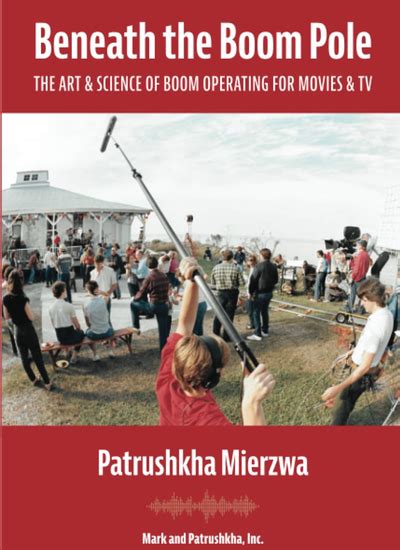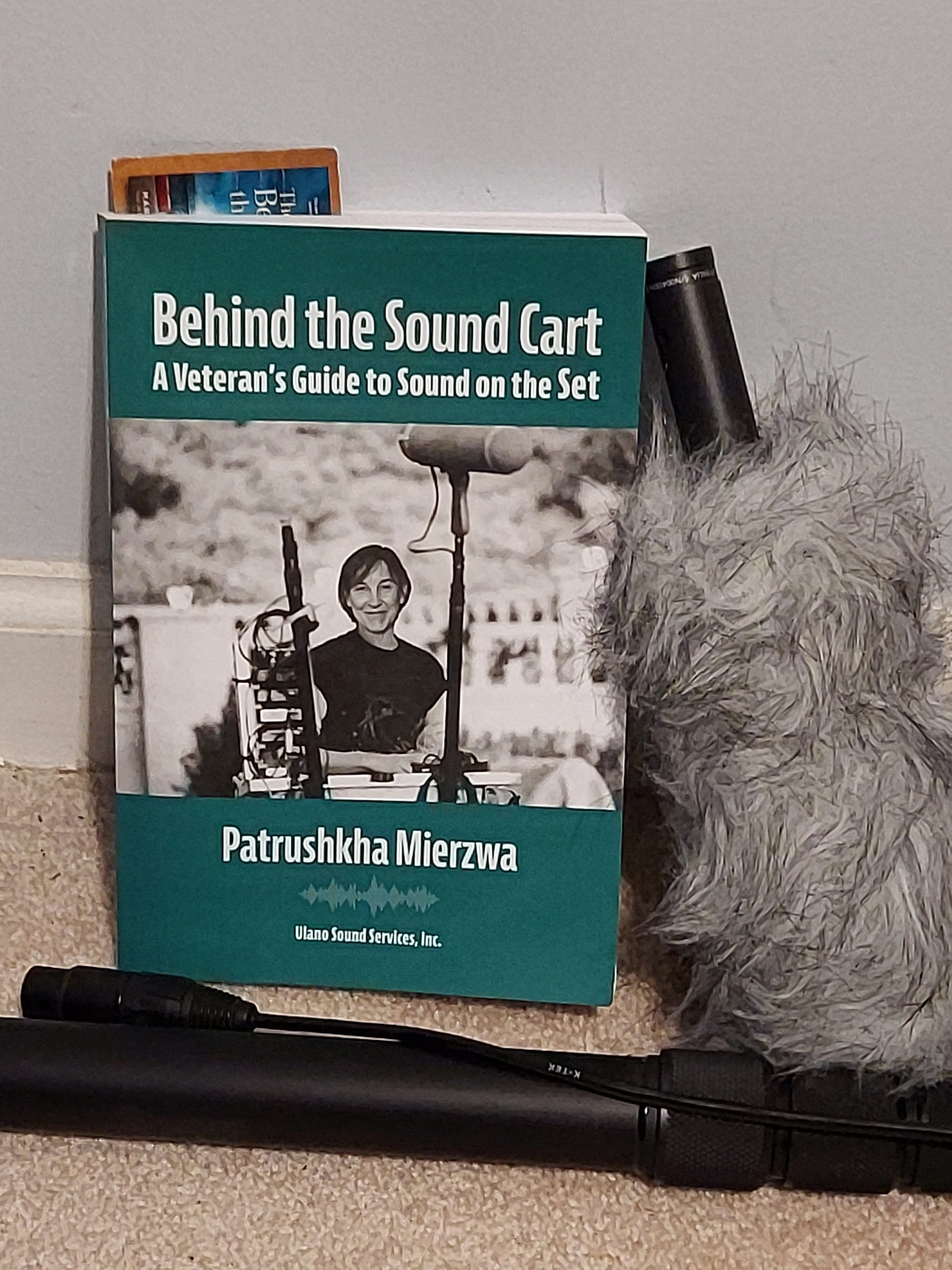
Review of Beneath the Boom Pole
When I open Beneath the Boom Pole: The Art & Science of Boom Operating for Movies & TV by Patrushkha Mierzwa, I am opening a treasure chest with over 40 years of experience in location sound for film. Mierzwa has been nominated as part of a team for Academy Awards on Ad Astra and Once Upon a Time in Hollywood… and her most recent credit is Killers of the Flower Moon. When not on a film set, Mierzwa lectures and teaches at various prestigious film schools around the world.
Beneath the Boom Pole is about what it takes to be the human that holds the boom pole. Each chapter tackles the skills and basic gear that is required of a Boom Operator. Starting with the history of film and then progressing through the production of a film, the book also covers health and safety for those working on set. This results in the chapters following a logical order. However, Mierzwa mentions that the best way to use Beneath the Boom Pole is as a handbook: looking through a chapter as it becomes relevant. My approach would be to skim through the whole book first, then keep it close as a reference guide. Course credit should be given for reading this book because of the wealth of knowledge and experience Mierzwa brings. There is an anecdote to back it up the warnings and stories to solidify the advice.
 Last year I reviewed Mierzwa’s Behind the Sound Cart for SoundGirls, and there are many similarities between the two books. In fact, they are 2 of a three-part series on production sound by Mierzwa. Where Behind focuses on the Utility Sound Technician, the person at the sound cart, Beneath is about the Boom Operator. While many independent productions have one person for both of these roles (I recommend that you buy all of Mierzwa’s trilogy when the third is released,) there are productions that have at least one of each. Boom Operators are working next to the cameras and lights, being invisible to both, while being in the best placement to capture the sounds coming from the actors. There is a physicality and diplomacy that occurs in such a role, and it permeates every chapter of Beneath the Boom Pole.
Last year I reviewed Mierzwa’s Behind the Sound Cart for SoundGirls, and there are many similarities between the two books. In fact, they are 2 of a three-part series on production sound by Mierzwa. Where Behind focuses on the Utility Sound Technician, the person at the sound cart, Beneath is about the Boom Operator. While many independent productions have one person for both of these roles (I recommend that you buy all of Mierzwa’s trilogy when the third is released,) there are productions that have at least one of each. Boom Operators are working next to the cameras and lights, being invisible to both, while being in the best placement to capture the sounds coming from the actors. There is a physicality and diplomacy that occurs in such a role, and it permeates every chapter of Beneath the Boom Pole.
As mentioned before, the Boom Operator is in a balancing act. There are microphones to consider and polar patterns to visualize in recording the best sound. However, Mierzwa focuses on more than gear or technical skills. She repeatedly points out how interconnected each department is on the film set. A team only works when all parts communicate their needs and boundaries. Diplomacy and problem-solving is a recurring theme throughout the chapters.
Another major point in this book, as it was in Behind the Sound Cart, is safety. Due to the balancing of the boom pole and the long hours of standing, several chapters are devoted to the caretaking of injuries that occur on set. In addition, there are various case studies to show that it is not a matter of if, but when injuries occur. Mierzwa takes the time to let others learn from her mistakes, and improve best practices for the next generation of Boom Operators.
At the start of her career in the 1980s, Patrushka Mierzwa was one of the first women in location sound on bigger productions. By training future Boom Operators, Mierzwa is leading the cause for gender parity. The chapters in Beneath the Boom Pole on this subject need to be included in all similar publications for other film crew members. Parenting has a whole section devoted to how it intersects with career, and it is not assumed that the main reader will be a mother. There are also recommendations for personal necessities that differ based on anatomy, and finally, someone put that neglected FAQ into print. Hygiene affects everyone. My only complaint is that Beneath does not go far enough in its sensitivity to gender. I understand that Mierzwa is one person, and only has the experience of her own life, but there can be a more nuanced way to address gender differences and relationships. This one criticism aside, I do not see other industry career guides providing this much insight into the hardships of parenting and self-care.
As a disclaimer, I will mention that Patrushka Mierzwa sent me a copy of Beneath the Boom Pole to review. However, that does not detract from the importance of having a book that dives deep into the world of location sound. As a companion to Behind the Sound Cart, this book builds upon that foundation. I eagerly await the third installment.
